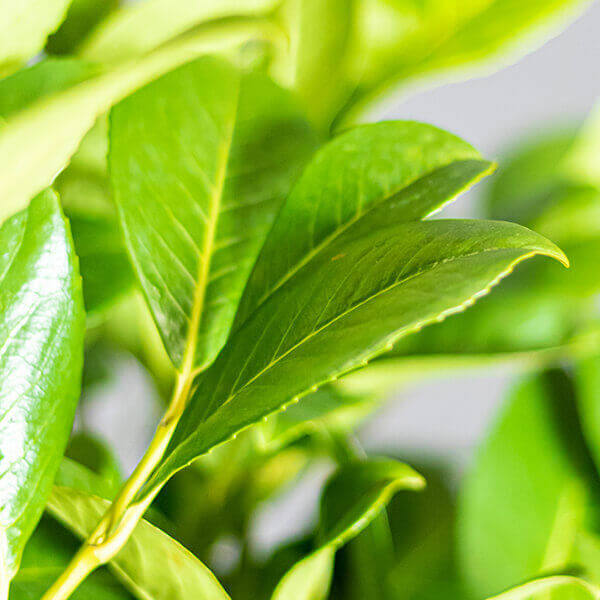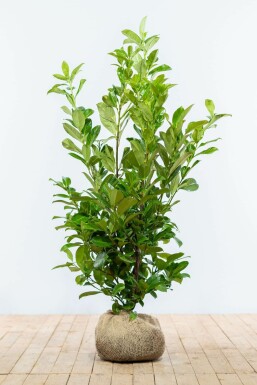Best Hedge Plants For Privacy
Best Hedge Plants For Privacy
Blog Article
Hedge Plants For Salt Tolerance
Boost your garden's allure with rich hedge varieties such as Yew (Taxus), Thuja, Laurel, Photinia, and Bamboo, commemorated for their structural stability and environmental advantages.
Yew and Thuja provide evergreen protection and winter season durability, while Laurel provides quick growth and broad, aromatic leaves.
Photinia adds seasonal beauty with its vibrant red foliage, and Bamboo provides a low-maintenance, tranquil ambiance.
These hedges improve air quality, minimize noise, and produce tranquil, personal spaces.
Correct planting, spacing, and maintenance guarantee energetic growth and environmental harmony.
Explore how these rich varieties can elevate your garden's appeal and well-being.
Key Takeaways
Change Your Garden With Lush Hedge Varieties
- Select Yew for its dense, evergreen development and unrivaled durability.
- Go with Laurel for its fast growth and broad leaves, making sure fast privacy.
- Choose Photinia for its dynamic seasonal foliage, which turns a striking dark red.
- Utilize Bamboo for a low-maintenance, winter-hardy hedge with aesthetic appeal.
- Space plants 2-3 per meter and prune routinely for optimum development and health.
Popular Hedge Plants
When changing a garden with lush hedge varieties, it's important to consider popular hedge plants such as Yew, Thuja, Laurel, and Photinia due to their distinct attributes and advantages.
Yew (Taxus) is extremely respected for its durability and thick, green development, making it a prime choice for enduring landscapes.
Thuja is noted for its evergreen foliage and robust winter resilience.
Photinia adds seasonal vibrancy with red leaves that darken over time, creating dynamic visual appeal.
Laurel offers rapid development and aromatic, broad leaves, perfect for quick privacy.
Furthermore, Bamboo is an exceptional choice for ambiance, offering a low-maintenance, winter-hardy alternative that boosts the garden's visual with its stylish, swaying walking sticks.
These choices accommodate a variety of horticultural requirements and choices.
Benefits of Garden Hedges
Garden hedges provide a wide variety of advantages, making them an important addition to any landscape. These natural barriers are economical to execute and provide significant wind defense, improving air circulation and adding to noise reduction. The thick foliage of hedges like Thuja and Beech guarantees personal privacy by blocking visibility, developing a peaceful and remote environment.
Hedges also play an essential role in microclimate policy, providing a steady environment that fosters plant development and minimizes temperature level fluctuations. Their complex leaf structures filter contaminants, enhancing air quality and adding to a healthier garden community.
Moreover, hedges master noise reduction, soaking up and deflecting sound waves to lower ambient sound levels. This double functionality of offering both visual and acoustic privacy boosts the general tranquility and aesthetic appeal of any garden.
Planting and Upkeep Tips
For a successful hedge, meticulous preparation of the planting area is vital. Ensure the soil has appropriate pH and drainage to support strong root advancement.
Space the plants properly for the picked types. Water the hedge regularly throughout its initial growth phase, changing as required with seasonal changes.
Execute a systematic pest control and disease prevention technique, utilizing organic or chemical treatments when required. Routinely examine for aphids, mites, and fungal infections.
Apply mulch to keep wetness and reduce weeds. Seasonal pruning promotes thick growth and air flow, essential for plant health.
Following these guidelines will assist you cultivate a vibrant, properly maintained hedge that enhances the charm of your garden.
Spacing and Trimming Standards
Spacing and Cutting Guidelines
Proper spacing and trimming are essential for cultivating healthy, visually appealing hedges. Sufficient spacing makes sure each plant gets sufficient nutrients, light, and airflow.
Follow these guidelines for optimal hedge upkeep:
- Spacing: Position hedge plants 2-3 plants per meter to motivate robust development.
- Pruning Strategies: Routine pruning is essential for maintaining desired hedge height and shape. Cut brand-new growth in summertime and cut back older wood throughout winter season.
- Seasonal Care: Change trimming methods and schedules according to seasonal requirements to make sure plant health.
- Hedge Height: Frequently screen and trim to keep the preferred hedge height and accomplish consistent visual appeals.
Adhering to these actions will ensure your hedge grows, boosting both the appeal and functionality of your garden.
Picking the Right Hedge
Choosing the Right Hedge
Picking the suitable hedge includes evaluating factors such as mature height, foliage density, and environmental resilience. Successful hedge plant choice requires understanding each types' growth attributes and site-specific versatility.
For example, Yew (Taxus) provides excellent longevity and thick development, while Thuja is notable for its winter durability. Additionally, thinking about maintenance requirements is crucial; fast-growing species like Laurel or Privet need routine cutting, whereas low-maintenance alternatives like Bamboo or Ivy might be more suitable for those looking for very little maintenance.
Ecological factors such as soil type, light availability, and moisture conditions need to also direct the choice procedure. This mindful technique makes sure the picked hedges will grow, providing both aesthetic and functional advantages to the garden landscape.
Shipment and Planting Advice
To ensure your hedge plants grow, they ought to be delivered by specialized couriers and planted promptly upon arrival.
Follow these essential steps for effective planting:
- Soil Preparation: Improve the soil with natural matter to enhance drainage and nutrient content.
- Planting Depth: Develop a trench two times the width and equal to the depth of the root ball.
- Watering Techniques: Water completely after planting, keeping the soil consistently moist but not filled.
- Mulching: Apply a layer of mulch to retain wetness and suppress weeds.
Customer Support and Service
Given the vital function of timely help in horticultural pursuits, our client support group is offered six days a week through telephone, e-mail, and social networks to provide skilled advice and quickly deal with any issues. Their dedication to fast response times makes sure client satisfaction by dealing with questions associated with plant health, optimal planting techniques, and maintenance schedules.

Interaction Technique
-----------------
This detailed support system, reinforced by an excellent 9.3/ 10 client rating, highlights our dedication to improving the gardening experience for every customer.
Often Asked Concerns
The Length Of Time Does It Take for Hedge Plants to Develop?
Hedge plants normally require one to 3 years to become completely established, with the precise duration varying by types and growing conditions.
Efficient care throughout this crucial duration is important for robust development. Consistent watering, alert weed control, and appropriate fertilizer application are critical in promoting strong root advancement.
For example, fast-growing types like Laurel might establish more rapidly, while slower-growing varieties such as Yew might take longer. Persistent upkeep accelerates the establishment procedure, resulting in thick and healthy hedges.
What Are the Best Hedge Plants for Privacy?
The concern of the very best hedge plants for privacy involves examining evergreen and deciduous alternatives.
Evergreen hedges like Thuja, Laurel, and Cypress provide year-round coverage, guaranteeing constant personal privacy.
In contrast, deciduous hedges such as Beech offer seasonal personal privacy, shedding leaves in cooler months.
Secret maintenance suggestions for privacy hedges include regular cutting, fertilizing in spring, and proper spacing-- generally 2 to 3 plants per meter.
Furthermore, constant watering and thorough weed elimination are crucial for promoting healthy, dense growth.
Can Hedge Plants Draw In Wildlife to My Garden?
Yes, hedge plants can draw in wildlife to your garden by supplying essential benefits like shelter, food, and nesting sites, thereby enhancing regional biodiversity. For example, yew, holly, and laurel are excellent for drawing in birds, while ivy supports a variety of bugs.
Nevertheless, it is necessary to note that there are some drawbacks, such as increased maintenance to handle insects and regular upkeep. Thoroughly choosing and keeping hedge ranges can help balance these disadvantages and benefits, eventually promoting a vibrant and sustainable community in your garden.
Are There Any Blooming Hedge Plants Available?
Yes, there are flowering hedge plants offered that can enhance the appeal of your garden.
For example, Elaeagnus, also called Olive Willow, produces fragrant white flowers in the fall, including a touch of sophistication.
Photinia, another popular choice, showcases vibrant red leaves that develop into an abundant green, developing a dynamic visual effect throughout the seasons.
To ensure these plants prosper, it's important to practice proper pruning techniques and seasonal maintenance, such as trimming brand-new development in the summer season and cutting back in the winter.
These measures will help maintain the health and visual appeal of your blooming hedges.
How Do I Avoid Bugs in My Hedge Plants?
To avoid bugs in hedge plants, employ natural pest control methods and preserve appropriate hedge care. Introduce helpful pests like ladybugs, which victimize damaging bugs, to create a balanced community.
Frequently examine your hedges for indications of invasion and immediately remove any affected parts to avoid the spread. Make sure the health of your hedges by using well balanced fertilizers and supplying sufficient water.
Use mulching to retain soil moisture and correct spacing to lower plant tension and promote robust development. These practices collectively help in reducing bug concerns and keeping a healthy hedge.
Conclusion
In essence, selecting the best hedge varieties such as Yew, Thuja, and Laurel can change any garden into a relaxing sanctuary. These plants provide year-round plant, boost aesthetic appeal, and offer useful benefits like noise decrease and wind security.
Appropriate planting techniques, precise spacing, consistent watering, and seasonal cutting are important for ideal growth.
Reliable shipment services and professional customer assistance ensure a smooth experience from purchase to planting, making it simpler than ever to elevate your outside space.
Garden hedges use a wide range of benefits, making them an important addition to Additional resources any landscape. These natural barriers are affordable to carry out and offer considerable wind defense, improving air circulation and contributing to sound decrease. The dense foliage of hedges like Thuja and Beech makes sure privacy by blocking visibility, developing a secluded and peaceful environment.

Pruning Methods: Regular pruning is essential for keeping preferred hedge height and shape. Trim brand-new development in summertime and cut back older wood during winter season.
Report this page